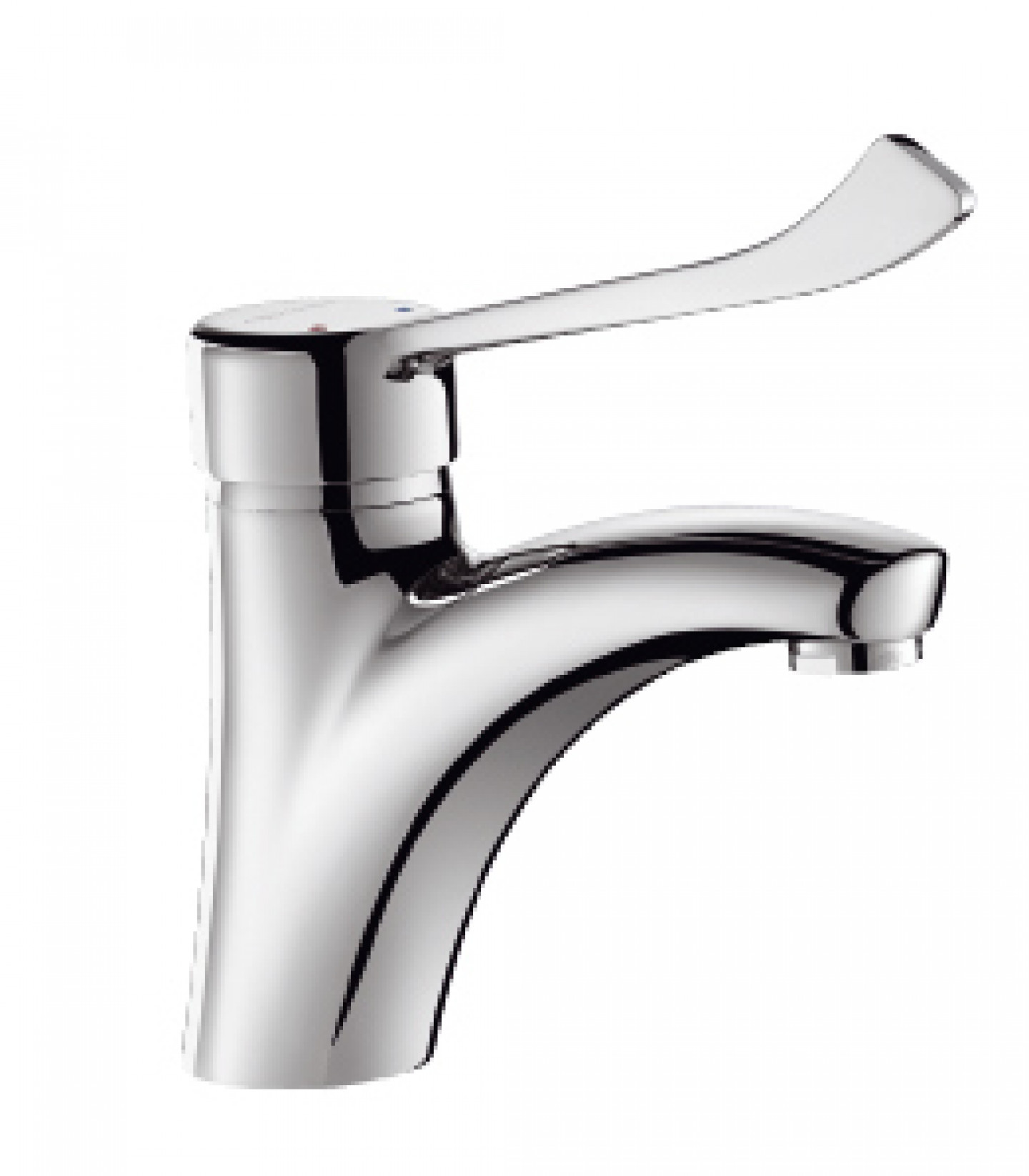Pressure Balancing
A mixer with a pressure-balancing cartridge will maintain a constant pressure between the hot and cold water, avoiding temperature variations due to pressure changes in the system. This provides an alternative to thermostatic technology which simply regulates the temperature. The mixer provides anti-scalding safety as the hot water will shut-off if there is a dramatic pressure drop in the cold water supply.
Thermostatic Sequential Control
Showers and mixers with thermostatic sequential cartridges provide the user with complete control at the point-of-use. The valve opens and closes with cold water, and the user can progressively increase the water temperature as desired up to a maximum pre-set temperature with one control. The risk of scalding is reduced considerably with the added benefit of drawing cold, potable water from the system.
Maximum Temperature Limiters
At the point-of-use, the maximum recommended temperature** for washbasins and showers is 41°C, and 44°C for baths (46°C for assisted bathing). Installing mixers with a temperature limiter will ensure that hot water is restricted to a safe temperature; however there must be no possibility of users overriding the limiter. If the system has low water pressure or an unexpected cold water supply failure, a failsafe must shut off the hot water supply immediately to prevent scalding. Thermostatic controls that meet NHS Model Engineering Specification D08 / TMV3 criteria will safeguard against scalding in the healthcare environment.
Ambient temperatures
Traditionally the body and mixing chamber of showers and mixers/taps have metallic surfaces which are effective heat conductors. However manufacturers employ various means to ensure that the external surfaces of mixers remain at an ambient temperature. Positioning the mixing chamber close to the hot water inlet avoids hot water travelling the length of the mixer body. Covering the mechanism and hot water inlet with an insulating material also reduces heat transfer. Similarly, circulating the hot water through narrow pipes inside the mechanism with an air gap between the pipes and the brass parts of the mixer also prevents heat conduction. If the mixer body is cool to the touch, the risk of burning through touching or accidentally brushing against the mixer is removed. guidelines for bacteria control and deliver safe hot water in hospitals and healthcare without exposing patients and residents to scalding risks. By specifying and installing products that have been specifically developed to face these challenges, seemingly conflicting constraints can be readily overcome.
*HSE – Health and Safety Executive publication series code L8
Legionnaires’ disease. The control of legionella bacteria in water systems. Approved
Code of Practice and guidance.
** Maximum temperature guidelines:
NHS Estates Health Guidance Note
BRE IP14/03 Preventing Hot Water scalding in bathrooms
TMVA Code of Practice for Safe Water Temperatures
